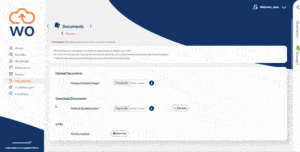Virtual onboarding is a way to handle the hiring process using a completely online HR process.
It’s an effective way of working that HR and recruitment managers have been exploring in more detail recently as a consequence of the restrictions imposed by the COVID-19 pandemic.
With the sudden move to remote working, hiring processes and tools need to be compatible with hiring teams who are not necessarily working from a central office.
But using online tools to deliver virtual onboarding is an approach that some organisations have already moved to, simply because it’s a more efficient and engaging way to manage new employees.
Here’s a look at what virtual onboarding is and how to get the best from it:
What is virtual onboarding?
Virtual onboarding refers to any process that allows new hires to be brought into an organisation using a completely online approach. Also known as online onboarding, it removes the need for any physical documents to be handled, signed or posted.
A virtual process can involve HR using a range of cloud-based tools, including platforms like Google Docs and Office 365. Alternatively, it can be with an integrated onboarding management solution.
How does virtual onboarding work?
Virtual onboarding uses cloud-based tools which allow all of the information a candidate requires to be accessed online. Giving incoming hires an online portal where they have instant access to all the documents and information they need makes it simple and engaging whilst making it easy for you to get the details you require too.
Secure digital signing and online forms remove the need for documents to be printed or posted, and prevents the need for contracts to have an ink signature. With all of the information handled digitally, HR teams can manage and monitor each stage of the process in real-time.
What are the benefits of a virtual onboarding approach?
The most immediate benefits are for those HR teams having to adapt to remote-friendly ways of working, as a result of the health pandemic. A virtual approach allows the process to be managed from wherever a person has an online connection – whether that’s in an office or at home.
Many HR teams have already switched to a virtual approach because of the significant efficiency benefits it can deliver. By removing the need for physical paperwork, you can reduce the onboarding process from weeks and days to hours.
What are the key ingredients for virtual onboarding?
The key components for virtual onboarding are no different from a paper-based approach. It still requires an effective plan, great communications and a fast and efficient administrative process.
Using an online approach simply makes it easier to achieve these objectives. Here’s a look at some tips on getting the best from virtual onboarding:
Make a plan
The foundation for any effective onboarding operation is a plan. It’s a roadmap which sets out exactly what your process is to bring new hires into your company. It sets out the key responsibilities for each task and sets any deadlines or targets for how long tasks should take.
Switching from a traditional approach requires a review and update of any existing plan. With the ability to instantly share and collect information, more focus can be placed on creating a positive and engaging experience for a new starter.
Improve the experience
Particular care needs to be taken with a virtual onboarding approach to ensure the candidate feels a part of the organisation they are joining. Many candidates will not have had the normal experience of attending a workplace interview.
Much more focus needs to be placed on engagement with positive and welcoming messages and communications. The use of video conferencing and chat tools can be an effective way to create a more personal new starter experience.
Use time effectively
Traditionally, many paperwork and policy tasks are left until a candidate’s first day in the workplace. A major benefit of a virtual approach is that you can complete these tasks before a candidate starts in their role.
A real-time process allows all of the important administrative work to be completed before the person starts. It helps to create a smoother experience for new hires and avoids having to bombard them with information during their first days.
Track performance
Another advantage of a virtual approach is the access it provides to onboarding data. With an onboarding management solution, accurate information about every stage of the onboarding process is automatically generated and stored.
Integrated reporting tools allow HR managers to monitor both qualitative and quantitative performance. Process blockers can be identified and tackled, changes can be made to improve engagement and the overall starting experience.
You can find more tips on how to get the best out of a virtual onboarding set up here: 8 Ways to Improve Remote Onboarding
Want to know more about virtual onboarding?
You can find more information about how Webonboarding provides a remote-friendly way of managing new hires here: http://webonboarding.com/contact/




